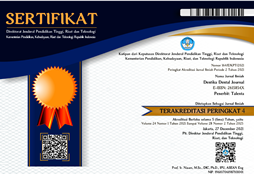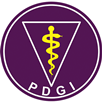ACTIVITY TEST OF IMMUNOMODULATORY COMPONENT FROM NEEM LEAVES TO CANDIDA ALBICANS
UJI AKTIVITAS KOMPONEN IMUNOMODULATOR DARI NEEM TERHADAP CANDIDA ALBICANS
DOI:
https://doi.org/10.32734/dentika.v16i2.1845Keywords:
immunomodulator, Candida albicans, imunohistochemy, neemAbstract
Empirically, societies have utilized neem plant to treat worm infection, scabies, malaria, candidal infection, and allergy. Several researches have indicated that consuming neem leaves could improve antibody production. Our previous research had demonstrated the existence of immunomodulatory component in neem leaves weighted 70 and 100 kDA. The aimed of study was to test the activity immunomodulatory components to Candida albicans. This research was an in vitro study with rats as experimental subject. The rats were divided into three treatment groups and one control group, which were labeled as KO (no treatment), KP1 (inoculated by C. albicans only), KP2 (inoculated by C. albicans and were given the 70 kDA immunomodulatory component), KP3 (inoculated by C. albicans and were given the 100 kDA immunomodulatory component). In day 21, preparations from rats’ tongue were done with immunohistochemistry staining and were analyzed for the activity of TNF-α macrophage phagocytosis and also for calculation of C. albicans colony from tongue swab. The result showed that there was no significant difference between the 70 and 100 kDA immunomodulatory components in increasing activity of TNF-α and macrophage phagocytosis and in decreasing the number of C. albicans colony. It was assumed that those components might actÃvate NF-κB and AP-1 that play role in protein transcription, which stimulated gene expression like TNF-α, which played role in phagocytosis. In conclusión, 70 dan 100 kDA immunomodulatory components increased the activity of TNF-α and macrophage phagocytosis and also decrease the number of C. albicans colony.


















